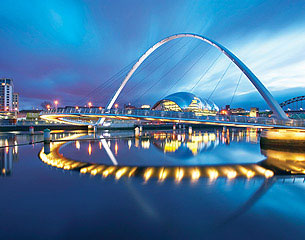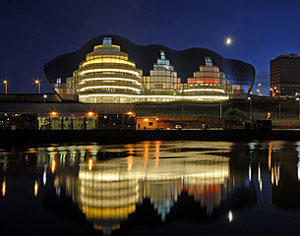Reply To:
Name - Reply Comment

At first, ‘City of Palaces’ doesn’t seem the most appropriate alias for Newcastle; a former industrial heartland known for its straight talking dockers and hard living miners.
But City of Palaces it is, courtesy of the vision of Richard Grainger, a 19th century property developer. While Grainger was not the founding father of Newcastle – that honour goes to Robert Curthose, Duke of Normandy and eldest son of William the Conqueror – he was responsible for transforming Newcastle with his neoclassical street designs.
With the help of local architect John Dobson, Grainger turned the centre of Newcastle from the ‘coal hole of the north’ into the city of palaces, according to author William Howitt. Grainger was said to have ‘found Newcastle of bricks and timber, and left it in stone’, and the imposing buildings which bear his mark are all predominantly four storeys, with vertical dormers, domes, turrets and spikes.
Today, despite the intervening decline of the ship building and coal mining industries upon which Newcastle was originally built, the city maintains an exuberant attitude alongside infectious optimism about its future. After a prolonged period of urban renewal, Newcastle is now undergoing another transformation, to that of renowned tourist destination.
 Attractions
Attractions
Start your tour by the quayside, where views of Newcastle’s riverside are dominated by the seven bridges of the Tyne. The George V Bridge – better known as the Tyne Bridge – opened in 1929 and served as the blueprint for the Sydney Harbour Bridge, which was also constructed in nearby Middlesborough.
From the northern end of the Tyne Bridge it is a short walk to Dean Street, precursor to Grey Street, the location of Grainger’s finest work. Named after Earl Grey – the tea’s namesake, British Prime Minister and Northumbrian resident – this street is home to the Georgian façade of the Theatre Royal, northern base of the Royal Shakespeare Company. At the pedestrianised end of Grey Street, where it meets Grainger Street, is Grey’s Monument, a statue of Earl Grey atop a 40-metre column complete with viewing deck.
Walk to the southern end of Tyne Bridge, and you’re in Gateshead, Newcastle’s arty cousin. After a look at the Norman Foster-designed The Sage - a concert hall curiously reminiscent of a large, shiny slug - head east to the former Baltic Flour Mill, now converted into a Centre for Contemporary Art. Finally, travel seven kms south to the Angel of the North. This 200-ton steel structure, unveiled in 1998 to pay tribute to the industrial heritage of the North East, is 20 metres high with a wingspan of 54 metres, and welcomes 90,000 people every day as they arrive on the East Coast railway or A1 road.
 Dining and Nightlife
Dining and Nightlife
Arguably the nightlife capital of the north, Newcastle has a reputation for being a fun-loving city. Geordies, an affectionate term for the city’s residents, are renowned for their love of going out. A common city centre sight is a queue of excited clubbers standing outside in sub-zero temperatures – without coats – waiting to enter the latest nightspot.
The city is regularly placed in the UK’s top 10 nightspots, and the Rough Guide tourist handbook voted Newcastle’s nightlife Great Britain’s number one tourist attraction. The best places for nightlife are concentrated around the Bigg Market, Central Station and Quayside area of the city centre, and the student suburb of Jesmond.
The city’s 190,000 residents can choose from a wide variety of restaurants, and its thriving Chinatown, opposite Newcastle United FC’s St. James’ Park stadium, is a well-known dining destination. Or, if you’re full of beer and bravado, try the world’s hottest curry near Bigg Market, which numerous celebrities have tried and failed to finish.
Beyond Newcastle
Newcastle’s location in the north east of England makes it a great springboard for short trips north of the border into Scotland: Edinburgh is only 144kms away. Or walk the route of the ancient Scottish/English divide, marked by the Roman remnants of Hadrian’s Wall. The most popular tourist attraction in Northern England, the wall is a UNESCO World Heritage site, and starts at Wallsend on the Northumbrian east coast, passing through Newcastle until it finally finishes on the west coast at Solway Firth, 117 kms later.
Emirates offers daily flights to Newcastle from Dubai using a state-of-the-art fleet. Discover Emirates luxurious in-flight facilities on Newcastle flights, which include deeply reclining comfort in Business Class and plenty of room to relax in Economy Class. All classes feature ice, Emirates onboard information, communication and entertainment system offering up to 1,400 channels, ensuring flights to Newcastle that just fly by.